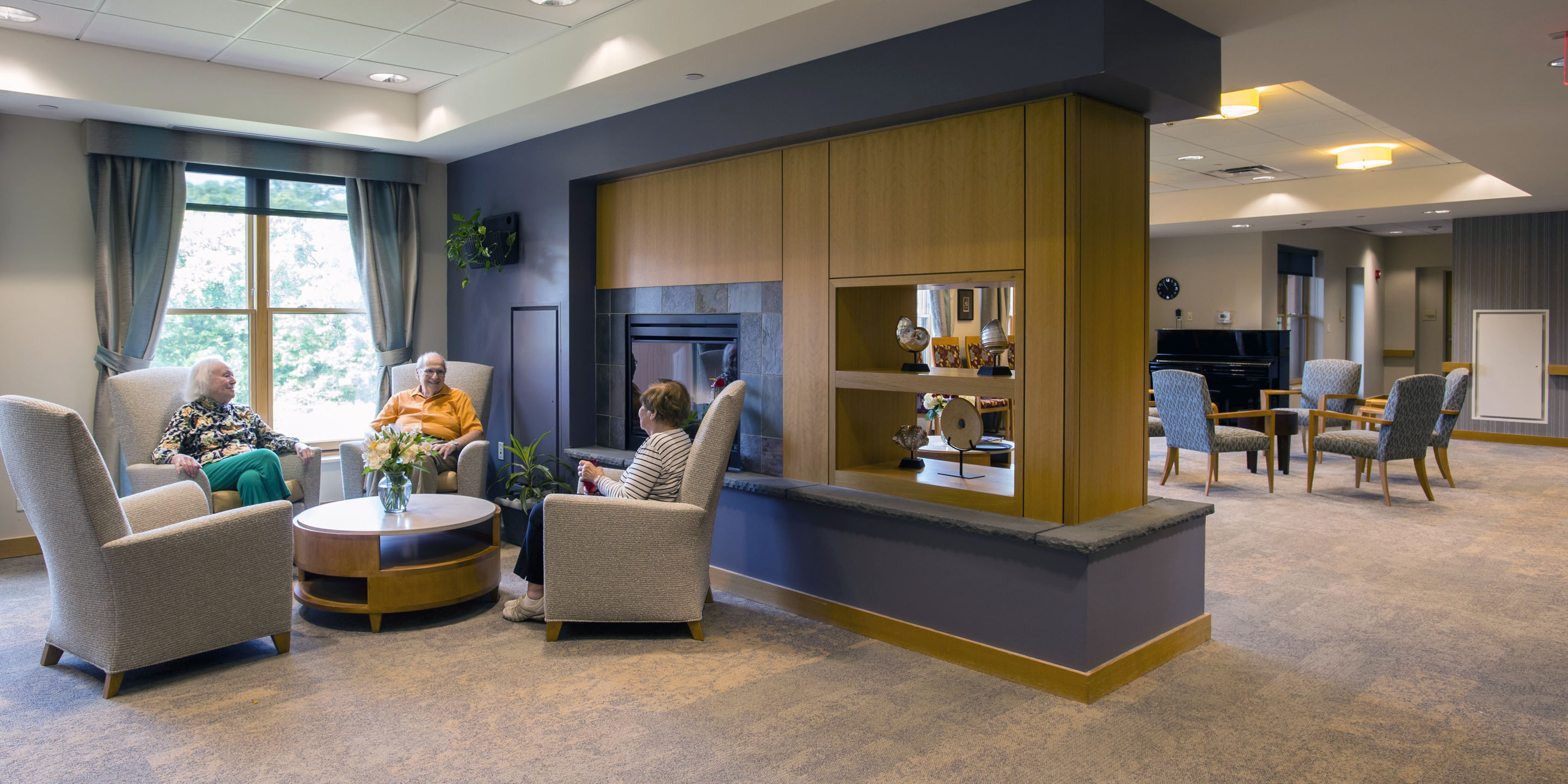Explore Charlotte Memory Care: Committed to Senior Wellness and Wellness
Explore Charlotte Memory Care: Committed to Senior Wellness and Wellness
Blog Article
Producing a Safe and Supportive Setting: In-Home Memory Care Essentials
Developing a nurturing and safe atmosphere for people requiring at home memory care is paramount to their well-being and top quality of life. From making sure safety within the home to utilizing effective interaction methods and implementing memory-friendly layout elements, there are crucial parts that add to a holistic treatment approach. By concentrating on creating a supportive environment that satisfies the special needs of those with memory disabilities, caregivers can dramatically improve the day-to-day experiences of their loved ones.

Safe Living Setting
Creating a hazard-free and safe living setting is extremely important when providing in-home memory treatment for people with cognitive problems. Ensuring the safety of the individual with memory loss is essential to avoid mishaps and promote a sense of well-being.
Furthermore, it is essential to install safety features such as grab bars in bathrooms and hand rails along stairs to give assistance and stop mishaps. Furthermore, using technology such as motion sensing units and alarm systems can notify caregivers if the individual wanders or remains in distress. Developing a risk-free living environment also entails applying strategies to avoid roaming, such as utilizing door alarms or locks to limit accessibility to hazardous areas. By prioritizing safety and security procedures and eliminating potential threats, caretakers can offer a secure and encouraging environment for individuals with cognitive impairments obtaining in-home memory treatment.
Efficient Interaction Techniques
Applying tailored communication approaches is vital in cultivating meaningful communications with people with cognitive impairments in the context of at home memory treatment. Effective communication plays a critical role in producing an encouraging environment that improves the wellness and lifestyle for individuals with memory issues. When interacting with a person experiencing cognitive decrease, it is essential to utilize straightforward and clear language, preserve a calmness and favorable tone, and give aesthetic cues to aid comprehension.
One secret approach is to exercise energetic listening, revealing empathy, patience, and respect throughout discussions. Non-verbal cues such as faces and body language can also aid communicate understanding and assistance. Additionally, using reminiscence therapy by making use of or reviewing previous experiences songs and art can use long-lasting memories, triggering links and promoting interaction.
Additionally, integrating routine routines and consistent communication patterns can provide a sense of familiarity and security for people with memory problems. By applying these interaction methods, caregivers can establish meaningful links and advertise a sense of comfort and trust fund in the at home memory care setting.
Memory-Friendly Layout
Offered the relevance of producing a supportive setting for people with memory issues via reliable communication strategies, the unification of memory-friendly style elements in the space ends up being crucial in enhancing their daily experiences and total wellness. Memory-friendly design concentrates on improving safety and security, convenience, and independence for people with cognitive impairments. Straightforward adjustments can make a significant distinction, such as using contrasting shades to improve presence and reduce complication, incorporating clear signs to aid navigating, and minimizing mess to stop sensory overload.
Including familiar aspects from the person's past, such as personal images or favorite products, can evoke favorable memories and produce a sense of experience. Additionally, making sure sufficient lighting levels, mounting grab bars in restrooms, and applying non-slip flooring can assist protect against falls and injuries. Producing a calming and relaxing environment through using familiar fragrances, soft appearances, and peaceful noises can likewise advertise leisure and reduce anxiety. By incorporating these memory-friendly layout components, caregivers can offer a risk-free and helpful living space that enables individuals with memory problems to preserve their self-reliance and lifestyle.
Daily Regimen Preparation
When creating an everyday routine for individuals with memory issues, mindful preparation is vital to sustain their cognitive function and overall well-being. Developing an organized schedule can help in reducing disorientation, anxiousness, and confusion frequently experienced by those with memory impairments. Begin by integrating familiar activities that straighten with the individual's interests and choices. Consistency in daily regimens can offer a complacency and stability, assisting in the conservation of cognitive abilities.
Versatility is essential, as some days might need adjustments based on the individual's mood and power levels. Routinely examining and adjusting the day-to-day timetable will certainly assist guarantee its effectiveness in promoting a soothing and positive setting for individuals with memory obstacles.
Assistance System Execution
Developing a robust network of encouraging people plays a critical function in boosting the high quality of care and wellness for individuals calling for memory assistance. Family participants, close friends, medical care experts, and neighborhood resources can all add to creating a solid support group. Interaction among these individuals is important to make sure that the requirements of the private with memory challenges are met properly.
Relative are often the key caregivers and create the foundation of the support group. They offer daily treatment, psychological assistance, and friendship. When required to avoid burnout and ensure the finest possible care for their loved one., it is vital for family members to seek aid and respite.
In addition to family assistance, entailing healthcare professionals such as registered nurses, physicians, and specialists can offer specific care and advice. These specialists can use valuable understandings, medical suggestions, and aid in managing the individual's condition.

Verdict
To conclude, developing a secure and helpful atmosphere for people with memory treatment needs is necessary for their health. By establishing a secure living setting, making use of efficient interaction techniques, integrating memory-friendly style elements, intending everyday regimens, and applying a strong assistance system, caregivers can aid enhance the lifestyle for those with memory loss. These necessary components collaborate to produce a nurturing and encouraging setting that advertises freedom and boosts general lifestyle.
Creating a hazard-free and protected living setting is vital when giving in-home memory care for people with cognitive problems. By prioritizing safety actions and eliminating potential threats, caretakers can offer a secure and encouraging atmosphere for individuals with cognitive problems useful reference receiving at home memory care.
Developing a robust network of encouraging people plays a crucial role in enhancing the high quality of care and wellness for individuals needing memory support - Charlotte Memory Care. Communication amongst these individuals is essential to make sure that the needs of the private with memory challenges are satisfied effectively

Report this page